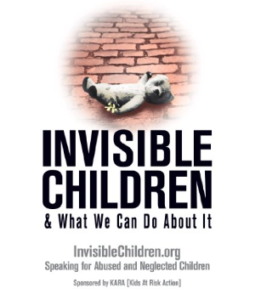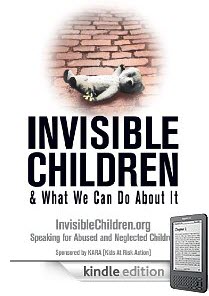Invisible Children Book Review
Mike Tikkanen’s book, INVISIBLE CHILDREN is an urgent call to action that describes in plain, heart-wrenching terms how our institutions act as enablers of child abuse.
Mike outlines how America’s current strategies and institutions are being overwhelmed by the magnitude and severity of the problem of child abuse. I would take it a step further and say that his book is an indictment of the very institutions that we have established to protect the weakest among us: our children.
It is not teachers, school administrators, social workers, police, or therapists causing the problems in our schools, communities, and prisons. These hard-working, well-intentioned professionals are not to blame. As he correctly points out, they are doing the best they can within the framework of laws, regulations, and policies.
The issue he brings to light is much broader and much deeper. This is not an issue of blame – of “right versus wrong” – this is an issue of “right versus right” – the very definition of tragedy.
In 1994, I completed a study extending over five years and concluded that certain human service agencies and law enforcement services designed to solve such problems as crime, illiteracy, child abuse, drug addiction, poverty and homelessness actually operate within a hidden inherent logic to perpetuate and exacerbate the very conditions that they were designed to cure.
Put differently, the purpose of any system is what it does. What the Child Protection System does is produce victims and future inmates for the criminal justice system.
Generation after generation, these abused children fill our prisons, overwhelm our schools, and make our cities unsafe for the people who must live in them.
Our current policies ensure more crime and prisons, failing schools, and a growing number of neighborhoods unfit for human habitation. There are no simple answers to these problems. However, this I know, these problems cannot be solved within the framework of the current system that created them.
More programs, new laws and additional regulations will only produce a temporary remission before there is a rebound and escalation of the original problem.
This is a hard-hitting, often uncomfortable book about an enormous, complicated and painful problem. Mike Tikkanen has taken a courageous stand to open our eyes and expose the truth. It is now up to all of us to confront the truth and begin this essential dialogue.
-Kathleen S. Long, PhD
April, 2005
 An uncomfortably close look at the American cycle of abuse and its cost
An uncomfortably close look at the American cycle of abuse and its cost



